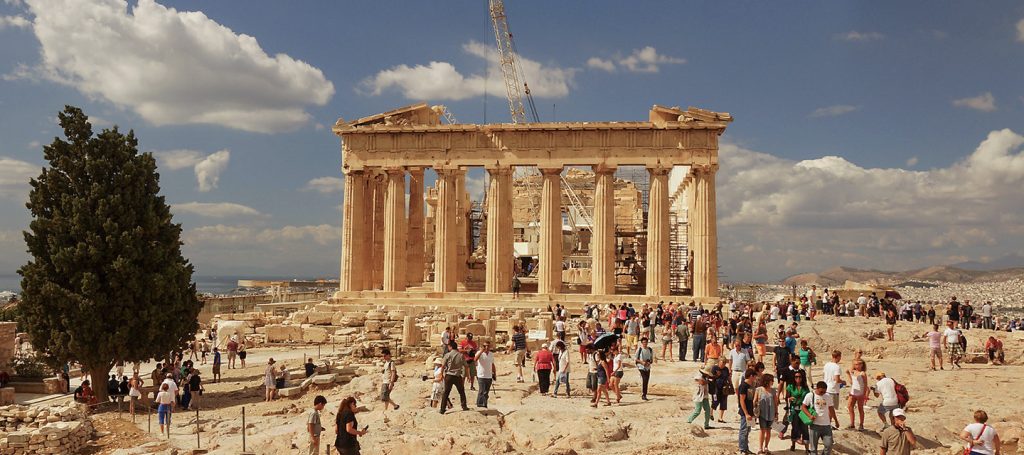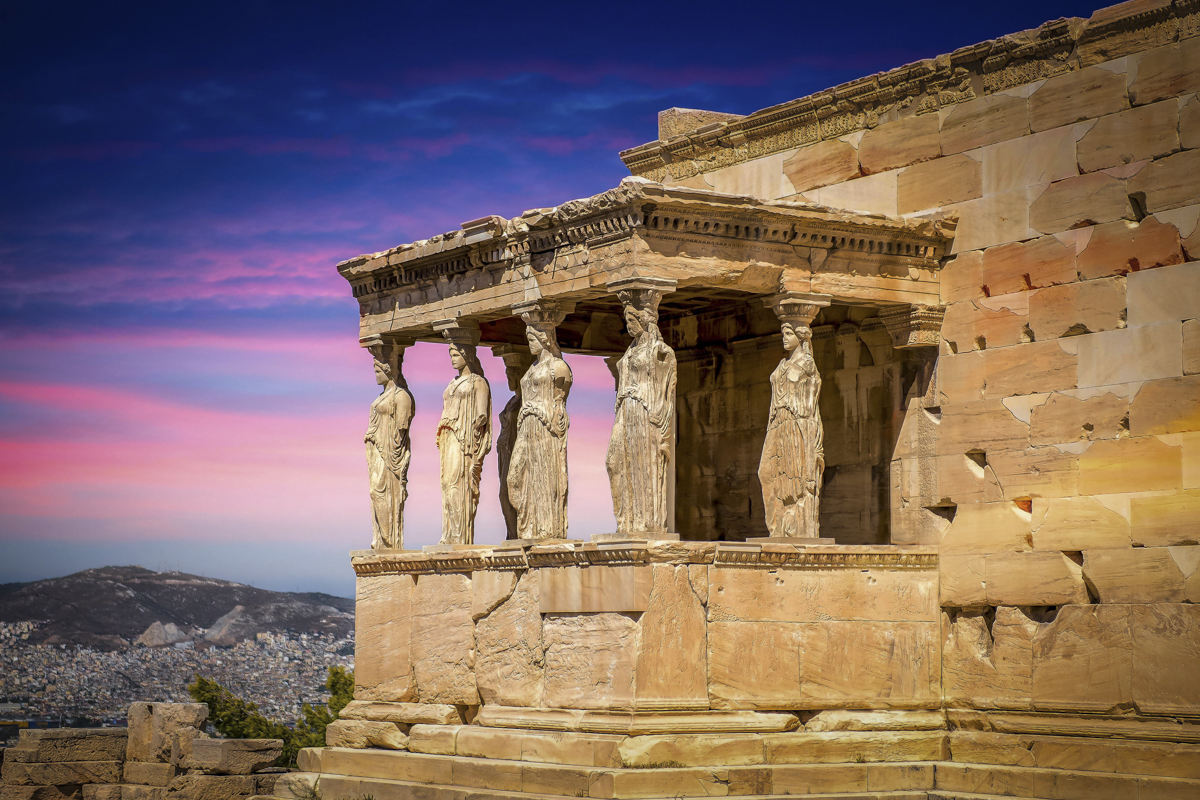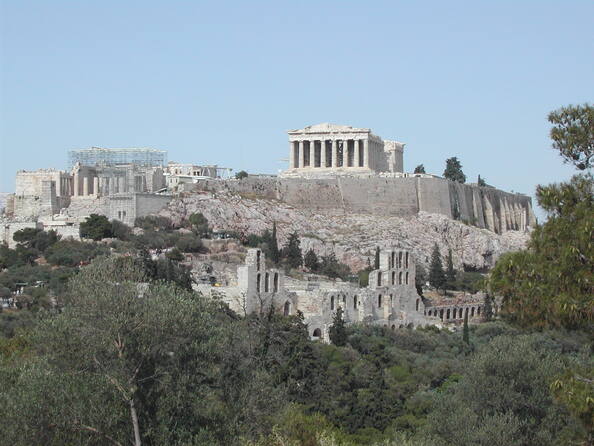
帕特农神庙
雅典卫城包括希腊古典艺术最伟大的四大杰作——帕特侬神庙、通廊、厄瑞克修姆庙和雅典娜胜利神庙,诠释了一千多年来在希腊繁荣、兴盛的文明、神话和宗教,可被视为世界遗产理念的象征。
卫城,Acro-polis,高处的城市
前510年,阿波罗神谕宣布卫城是神的领地
神谕(oracle),由祭司传达的神的指示。德尔菲的阿波罗神谕在前7世纪和6世纪形成重大的政治影响。
前480年,卫城建筑被波斯人焚毁
伯里克利时代,卫城变得金璧辉煌,达到古典时期建筑艺术的顶峰
1987年,卫城被列为世界文化遗产名录
山门是卫城的入口,由中央大厅、左右各两厅共5厅组成。
帕台农(Parthenon)意思是“处女的房间”(雅典娜女神一直未婚),供奉雅典娜女神的巨型塑像(12米高,古代世界奇迹之一),前447-438年建造,雕刻家菲迪亚斯主持施工建造。公元426年,雕像被运到君士坦丁堡,后来消失。1687年,威尼斯人在卫城放火引发帕台农神庙内的火药爆炸

Erechtheion
伊瑞克提翁神庙(Erechtheion),以传说中的雅典王(工匠神与盖娅所生,由雅典娜抚养)命名,前421-前406年建成。6根女像柱引人注目。里面同时供奉雅典娜和波塞冬。
雅典娜胜利女神(Nike)庙,始建于前427-424年,1686年被土耳其人拆毁,1835年被考古学家复建。胜利女神是雅典娜的从神(卢浮宫三大镇馆宝之一)。
卫城南坡的狄奥尼索斯剧场(Theatre of Dionysos)在公元前6世纪出现,前342-326年由吕克哥斯(Lycurgus)重建,重建的剧场可以容纳1万7千人,64排座位,留至今的有20排。
前534年,希腊悲剧比赛在此剧场进行,诗人泰斯比斯(Thespis)获得冠军。他最早让演员与合唱队对话,形成戏剧。三大悲剧家的戏剧都在此首演。尼采《悲剧的诞生》把阿波罗精神(日神)和狄奥尼索斯精神(酒神)看成二元对立的精神状态。
伯里克利鼓励戏剧,创办戏剧节(持续五天),看戏可以得到政府津贴。
卫城南坡的希罗德·阿迪库斯剧场(Odeon of Herdes Atticus)是罗马人希罗德·阿迪库斯于161年修建,1950-1961年间完全修复。
参看视频:《雅典卫城今昔》(The Acropolis of Athens)

Acropolis, Athens (Greece) © UNESCO
The Acropolis of Athens and its monuments are universal symbols of the classical spirit and civilization and form the greatest architectural and artistic complex bequeathed by Greek Antiquity to the world. In the second half of the fifth century bc, Athens, following the victory against the Persians and the establishment of democracy, took a leading position amongst the other city-states of the ancient world. In the age that followed, as thought and art flourished, an exceptional group of artists put into effect the ambitious plans of Athenian statesman Pericles and, under the inspired guidance of the sculptor Pheidias, transformed the rocky hill into a unique monument of thought and the arts. The most important monuments were built during that time: the Parthenon, built by Ictinus, the Erechtheon, the Propylaea, the monumental entrance to the Acropolis, designed by Mnesicles and the small temple Athena Nike.

